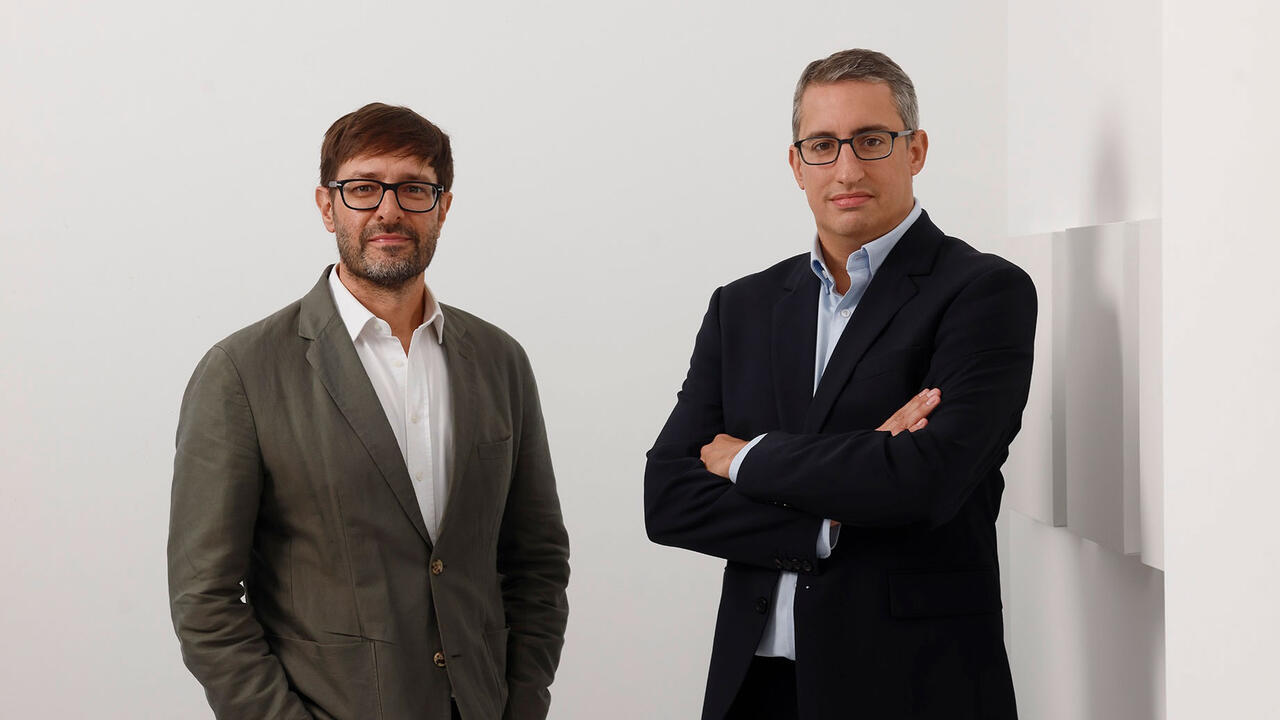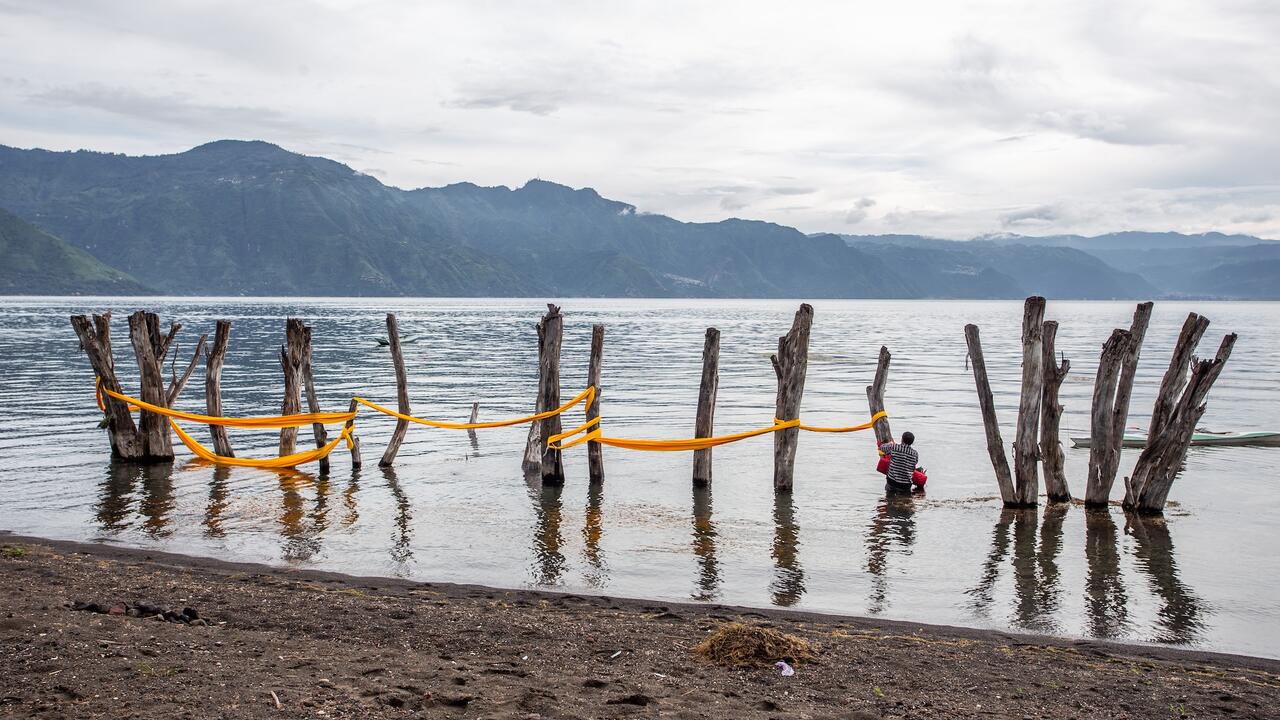The Last Picture Show
German Millennial exhibitions
German Millennial exhibitions
It's the turn of the millennium and Germany's museum engines are throbbing in competition. Who will produce the ultimate, fully encyclopedic megashow? Size does matter, especially now that the capital has been relocated from Bonn to Berlin. For Bonn, a return to small-town life on the periphery of the republic is quite out of the question. So the twin flagships of state art - the Kunstmuseum Bonn and the Kunst und Ausstellungshalle der Bundesrepublik Deutschland (built side by side close to the former residences of the government) - aligned themselves with (among others) the Museum Ludwig in Cologne to form the initiative 'Global Art Rheinland 2000', brushing away the stale whiff of the provincial with a generous demonstration of liberal cosmopolitanism. Unruffled, Berlin claimed pole position with a blunt display of representational power: the megashow 'The XX Century. One Century of Art in Germany' staged at three major museums - the Neue Nationalgalerie, Altes Museum and Hamburger Bahnhof - which ran the gamut of Modern art: Kandinsky, Dix, Grosz, Malevich, Kirchner, Ernst, Marc, Macke, Picasso, Tatlin, Braque, Richter, Polke, Beuys, Kiefer etc. All the masterpieces, from Cubism to Expressionism, from Constructivism to Conceptualism, were here. If you wanted to see everything, the show delivered. This is what it's like when art history gets pornographic: the past is laid bare in one gigantic peep-show.
The audience targeted by exhibitions like these is that vast section of the educated German middle class still dedicated to the Humanist ritual of Sunday worship in the Pantheon of cultural values. The most effective method of generating that cultural value, and enticing the masses willing to marvel at it, is still the evocation of the Sublime. As if its critique had never happened, the Berlin show invoked the Sublime not as a historical trope of avant-garde rhetoric, but as the reality of Modern Art. In its central section, entitled 'Spirit and Matter', the introductory information panel read: 'the 20th century proves that art can truly discover its own spiritual reality'. The conclusion is that if Kandinsky claims his paintings depict 'the spiritual', then that is indeed what they depict. To rebuke the unbelieving, the walls of the museum were adorned with pedagogical instructions. Extensive esoteric quotes from Beuys, and subtitles like 'The Spirit, the Cosmos and Sensitivity', or 'Delusion and the Demonical', left no doubt that the Modern Artist maintained close contact with higher beings.
Ironically, artists such as Polke or Kippenberger initially set out to ridicule and exorcise this very bourgeois pathos of sublimity in numerous offensively satirical paintings. However, the Berlin exhibition subsumed their work under the subtitle 'Jokes, Irony and Deeper Meaning'. Deeper meaning? If Polke made fun of the Sublime, then he wasn't being serious? Acrid, nihilistic scepticism is recast as a mild Romantic irony. At its worst moments, the exhibition became a celebration of Kieferism. Who better than he could illustrate the dark side of the 'German Sublime'? With their use of tar, lead and ash, Kiefer's works are a conservative art historian's wet dream - the iconography is just so right, so metaphysical. The Faustian spirit, the furor teutonicus and all the other Nietzschean vices are right there in your face. Even though the exhibition does issue a warning against the pathologies of the Sublime, it can't afford the analytical effort to dismantle the concept of sublimity - since it has already built it up as the big seller.
If the Berlin exhibition was monstrous, its equivalent in Bonn, 'Zeitenwende', turned out to be a real laugh. The show was smartly divided into two sections, one dedicated to the past, the other to the future. The first kicked off with the Venus of Willendorf (c. 25,000 BC), the famous prehistoric sculpture of an Earth Mother, presented in a darkened room filled with soothing in utero sounds. After that, the exhibition swiftly proceeded from ancient Rome, via the Middle Ages and the Renaissance, to the Industrial age. Memorable quotations from acclaimed philosophers (and more audio gimmicks - church bells and Gregorian choirs) kept you entertained on your brief passage through the history of human culture. What a triumph of didacticism. However the passage lead to the dead end of the present: a dark room with no exit and a Bruce Nauman installation comprising disembodied heads on video monitors, and a cacophony of dissonant voices. A helpful text explained that this represents the post-human age of new media. While the past offers the reassuring stream of steady progress, all the present holds is chaos and confusion; the dogma of conservatism couldn't be formulated more clearly.
The rest of the exhibition continued its reflections along similar lines. International artists were invited by curator Jan Hoet to comment on what they expect the future to be like. Two basic assumptions prevailed: firstly, the fear of disintegration - articulated in dismembered plush-bunnies by Anette Messanger, screeching violins by Rebecca Horn or a mutilated male puppet by Louise Bourgeois - and secondly, the utopian promise of reconciliation visualised in the form of esoteric glass cradles by Flutura & Besnik Haxhillari, a therapeutic sauna by Carsten Höller, and bathtubs filled with herbs and spices for spiritual rejuvenation by Marina Abramovi´c. Overall, the exhibition was certainly lively and sensual; yet, a discourse based mainly on the expression of hopes and fears obviously limits itself: I was reminded of the Cold War era, when it was popular to exhibit children's drawings in which the future either comprised nuclear missiles (bad) or the nuclear family (good).
In comparison to this predictable range of emotional responses, the Cologne exhibition 'Art Worlds in Dialogue. From Gauguin to the Global Present' at least set out to prove a point. It began with a demonstration of how Gauguin's translation of elements from Polynesian culture changed the path of the European avant-garde for good, and then examined elements of African or Oceanic art in the work of Picasso, Brancusi, Modigliani, Nolde, Pechstein, Schmidt-Rottluff etc., the influence of Eastern calligraphy and Zen thought in the work of Bissier or Klein, and Hispanic influence on American art of the 50s. The exhibition suggested a genealogy of how European art engaged in a liberal dialogue with its cultural 'other', but the spectre of colonialism haunts every exhibit. The sick logic of 'Primitivism' emanates from numerous works that objectify and exoticise the body of colour (both female and male) as a fetish of primal, animalistic sexuality. The warped Romantic negrophilia of German Expressionism, especially, leaves me with a sense of shame and anger. In the end, I can't help but think: what's the difference between Gauguin and a Hippie-geek recovering his 'primal instincts' at evening classes for African drumming? Gauguin was the first but that's about it. Then again, perhaps Gauguin was in the same position as a white musician or DJ playing black music today.
The contemporary part of the exhibition, however, raised exactly these critical questions, using work by artists engaged in the 'post-colonial discourse': Jimmie Durham, Renée Green, David Hammons, Lorna Simpson, Shirin Neshat, Chéri Samba, Huang Yong Ping, Rasheed Araeen and many others, who construct and contest representations of cultural, ethnic or sexual identity. If you felt a certain critical fatigue after passing through enormous museum invocations of the Sublime, then it came as a relief that, for once, art was not called upon simply to bolster traditional, 'sacred' cultural values.
















